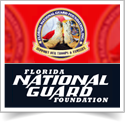‘Motors’ keeps Soldiers moving forward during annual training
Written by Contributor // June 14, 2012 // Feature Stories

Spc. Cesar Rivas scans the road before pulling off for his road test during driver's training with the 164th Air Defense Artillery Brigade. The road test checks the Soldier's ability to control the vehicle during different situations, while also getting the Soldier comfortable driving. Photo by Sgt. Valeria De Jesus
By Sgt. Valeria M. De Jesus
164th Air Defense Artillery Regiment
STARKE, Fla. (June 14, 2012) – The maintenance and motors section of the Headquarters and Headquarters Battery (HHB) 164th Air Defense Artillery (ADA) Brigade kept the wheels rolling on this year’s Annual Training (AT). They began early in the morning and were not seen again until dinnertime, sometimes making it difficult to truly appreciate all of the hard work they do behind the scenes. They were first to leave morning formation and last to arrive to dinner in the Dining Facility (DFAC) – each of them tired and sweaty.
Regardless of being short-staffed, the team came together and got the job done. During this AT they were responsible for maintaining and fueling the generators of the Air and Missile Defense Planning Control System (AMDPCS), the air conditioning generator in the DFAC, annual maintenance and repair on military vehicles, and driver’s training. In addition to all of their section tasks, they also have to do the required duties with the rest of the battery, such as guard shifts and kitchen duty.

Pvt. Alysha Ortiz of the 164th Air Defense Artillery Brigade pays close attention as Spc. Adam Smith gives her information about the control panel on the Up Armored Light Medium Tactical Vehicle (LMTV). Photo by Sgt. Valeria De Jesus
This week, the motors and maintenance section focused on Driver’s Training. The training consists of five different steps: classroom instruction, a practice test, review, written test and road test. Soldiers learn the basic components and maneuvering of a military vehicle, safety procedures, how to conduct proper Preventative Maintenance Checks and Services (PMCS), and how to fill out the forms, such as the 5988E PMCS form.
The four-and-a-half hour convoy from Orlando to Camp Blanding Joint Training Center in Starke is no ride in the park, but becomes lot easier when each Soldier has an assistant driver (A-driver) to alternate driving with. Safety, as well as overall unit readiness, is the primary purpose they conduct such in depth Driver’s Training.
Though the training is long and can get overwhelming, Soldiers of the 164th were motivated and engaged in training throughout each step. During the review phase, Sgt. Norberto Reyes, a driving instructor from the motors section, said he was very impressed with his students.
“I must be a pretty good instructor,” Reyes said jokingly.
During this AT, they trained and licensed eight new Soldiers on three different military vehicles. In addition to repairs, there is also a lot of paperwork involved with the motors section, such as dispatching vehicles, compiling driver’s packets and passing on necessary repairs recorded on PMCS forms to the mechanics.
“We make HHB 164th move!” said Sgt. Tina Silva, an Automated Logistical Specialist in the motors section.
The motors and maintenance section took moving troops forward both seriously and literally. This AT highlighted the critical importance of teamwork for the Soldiers of the 164th. Just like the parts of any car, truck or Humvee, each piece, regardless of size, is essential for movement.
###















